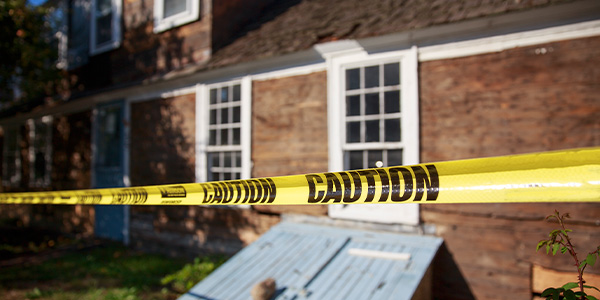Housing News
Deals to Die For: Are Murder Homes Worth the Discounts?
October 24, 2024
The Colorado home where JonBenét Ramsey was found strangled to death in the basement the day after Christmas in 1996 is legendary. Nearly 30 years after her death, true crime aficionados are still fascinated by who killed the 6-year-old beauty queen.
But the owners, who purchased the five-bedroom home in 2004, can’t seem to sell the property. They first listed the home in 2008 and have been putting it on the market, cutting the price, and then pulling it off multiple times since, according to Realtor.com.
The problem is it’s hard to find serious buyers for an infamous murder home—despite the discounts on these properties.
“There are fewer people in the market [who] would consider buying a crime scene,” said Randall Bell, CEO of Landmark Research Group. He specializes in damaged real estate and has appraised the JonBenét Ramsey home, the condo where Nicole Brown Simpson and Ron Goldman were killed, and Jeffrey Epstein’s homes.
Properties where murders occurred often sell for 10% to 25% less than market value, according to Bell. If the crime was particularly gruesome, received a lot of media attention, or involved children, the discount could go even higher.
Where the tragedy happened may also impact the size of the discount.
“If you’re in an urban area, people don’t pick up on it as much,” said Bell. However, when a crime is committed in more rural areas, “the stories linger longer.”
These homes, regardless of location, may sit on the market for longer and undergo multiple price cuts.
Reduced prices may not be low enough for many potential buyers to overlook the deaths on the property. And buyers may not realize they may be paying a different kind of price when they purchase these homes.
Murder homes may attract unwanted attention

In an age of true-crime podcasts, amateur online sleuths, and “Dateline,” it’s easier than ever to learn about some of the nation’s most heinous murders—and then get the address to where they occurred.
“There’s going to be the lookie-loo effect,” said Bell. “It normally diminishes over time, but if that’s going to bother you, you probably shouldn’t buy the property.”
The owners of these homes may have to contend with visitors stopping in front of their homes to take pictures or strangers showing up and asking for tours.
“They come by at 11 o’clock at night and ring the doorbell,” said Bell.
There may even be attempted break-ins.
On the flip side, neighbors and local children may not want to come over for barbecues or birthday parties.
“Don’t think that everybody’s going to treat you the way you want,” said Bell.
Murder homes may be harder to sell
The new owners may have trouble eventually selling the home.
“If they’re positioned right, they sell,” Bell said. “The problem is people expect full price.”
Most states don’t require sellers to tell potential buyers if a murder took place on the property.
Only Alaska and South Dakota require sellers to disclose if someone died by murder or suicide in the home in the last year, while California requires sellers to inform buyers of any death on the property within the last three years, according to Apartment Therapy.
Sellers in Connecticut and Delaware must tell buyers if asked in a written request, while sellers in Hawaii, Kansas, Ohio, are recommended, but not required, to disclose.
That doesn’t mean sellers and their real estate agents can be dishonest about a murder on a property in a different state. It’s better to be up front about it, said Bell.
If buyers find out about the crime on their own, they may try to back out of the deal—or file a lawsuit
“When you start hiding stuff or downplaying stuff, you lose credibility,” said Bell.
Some murder homes are torn down
In rare cases, homes that serve as a painful reminder to the community of a tragedy may be torn down.
In 1992, the Milwaukee apartment building where serial killer Jeffrey Dahmer lured many of his victims was razed.
More recently, the Idaho rental home where four college students were stabbed to death in 2022 was torn down a year after the murders.






 Smart Moves Start Here.
Smart Moves Start Here.